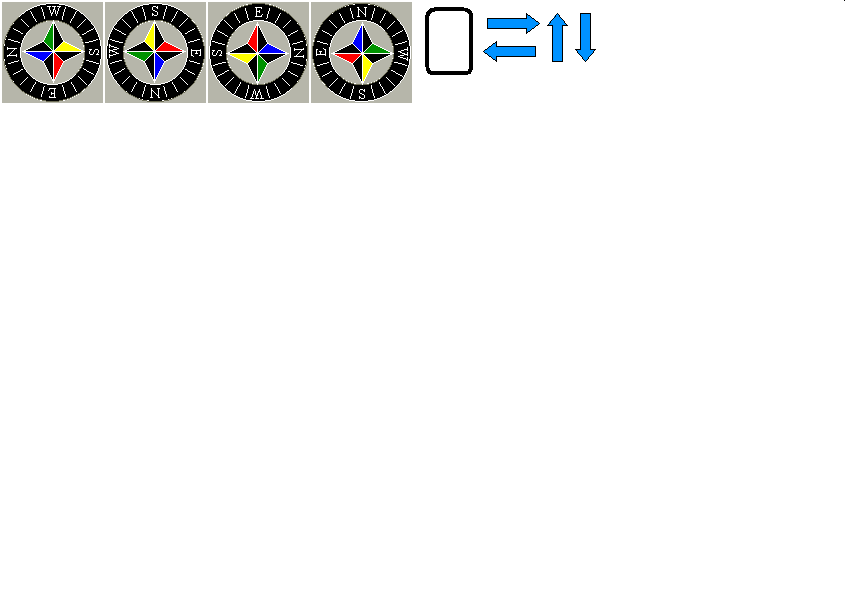
[EAST / SOUTH / WEST / NORTH]
Mah Jong Home | Building the "Wall" | Dealing the Starting Hands | Play of the Hands | Scoring and Payoffs | Play Online Game | Mah Jong Tiles | Mahjong Spelling
A Mahjong set contains a total of 144 tiles. Most of these form four series each of three suits: (Bamboo) Sticks, Wheels, and Numbers.
In earlier centuries, these pieces were depicted as spears. In modern games, they are bamboo sticks (suozi, or commonly called tìao, meaning "stick"). Each set has four of each of the following pieces, numbered 1 through 9.
Note that the 1 of sticks is generally rendered as the image of a bird--usually a sparrow or peacock.
Anciently, these were depicted as coins or shields. Now they are called wheels or balls (tongzi). Again, each set has four of each of these pieces, numbered 1 through 9.
Finally, there is a suit consisting of the Chinese characters for the numerals 1 through 9 (wànzi). The character on top of the tile face is the numeral; the character below that is the Chinese symbol wàn (wàn), meaning 10,000. This suit is therefore also called the wàn suit.
Each game contains a set of tiles inscribed with the Chinese characters for the four compass directions, representing the four winds:

There are four of each of these tiles in the game.
These pieces are called "dragons" in the West: the red dragon (hóngzhong),
symbolizing the "middle" or "animal" order, including humans
(zhong is the Chinese character meaning "center"), the green
dragon (qingfa), symbolizing the "lower" or "plant"
order of life, and the white dragon (![]() báipí), symbolizing the "higher" order of spiritual beings).
báipí), symbolizing the "higher" order of spiritual beings).
There are four of red dragon, green dragon and white dragon in a Mahjong set.
Note that the "white dragon" tile is simply a plain white tile with or without a rectangular border drawn on it.
There are eight "flower tiles" (huapái) in each Mahjong set. While they are all collectively called "flower tiles" in these rules, four of them represent different flower blossoms, while the other four represent the four seasons.
Each of these tiles represents a different flower, and is associated with a specific wind, which has relevance only for scoring purposes. There is only one of each flower tile in a Mahjong set.
These are just like the flower tiles; they do not enter play except to enhance the score of a player's hand. There is only one of each season tile.
Don't worry too much about memorizing the appearance or characters of the flower and season tiles. Just remember the correspondence between the numbers on the tiles and the four wind directions:
ALL Mah Jong - Please send other userful links and problem reports to support (at) allmj.com